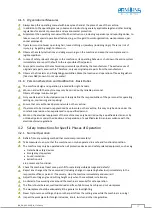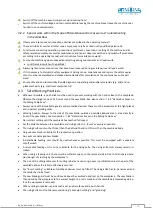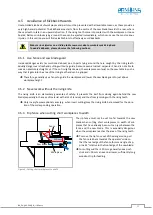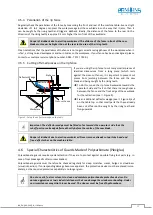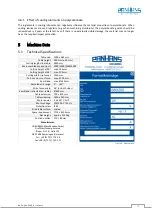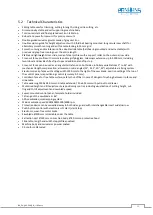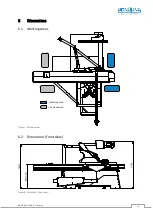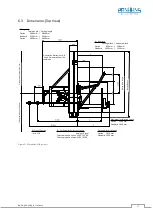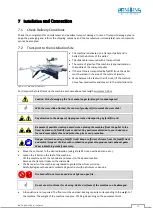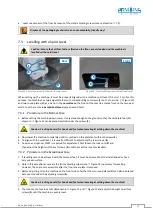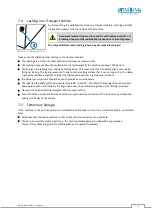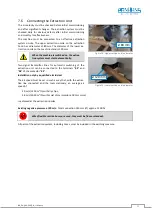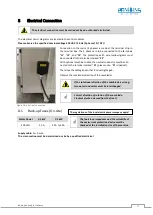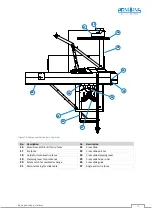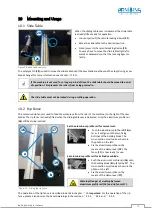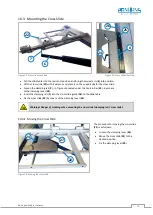
BA_PH_680-200_EN_11-22.docx
21
4.5
Avoidance of Kickback Hazards
Uncontrolled kick-back of workpieces and parts must be prevented with all available means, as these provide a
very high hazard potential. The kickback area starts from the centre of the saw blade towards the rear, where
the saw teeth rotate in an upward direction. If the rising teeth come into contact with the workpiece or loose
boards, battens or blocks lying around, these can be ejected immediately, which can cause the most serious
injuries. In this section you will find valuable hints to effectively avoid kickbacks.
Many serious injuries on a sliding table saw occur due to workpieces kicking back.
To avoid kickbacks, please observe the following sections.
4.5.1
Use fence and saw blade guard
Increased danger exists (as mentioned above) due to parts lying around that are caught by the rising teeth.
Equally dangerous is freehand cutting without a guide, because even a trained carpenter's hand is not able to
make an absolutely straight cut. If the cut is slightly skewed, the workpiece can twist on the saw table in such a
way that it gets into the area of the rising teeth and can be gripped.
➔
Therefore, generally use a fence to guide the workpiece and lower the saw blade guard to just above
workpiece height.
4.5.2
Never work without the riving knife
The riving knife is an elementary guarantee of safety. It prevents the kerf from closing again behind the saw
blade (especially in the case of material with a lot of tension) and thus from jamming with the rising teeth.
➔
Only in very few exceptional cases (e.g. when insert cutting) may the riving knife be removed for the dura-
tion of the corresponding operation.
4.5.3
Rip fence when cutting short workpieces to width
Figure 4: Cutting short workpieces to width
The rip fence must not be set too far towards the saw
blade when cutting short workpieces to width. Work-
pieces that have already been cut can jam between the
fence and the saw blade. This is especially dangerous
when the workpiece reaches the area of the rising teeth.
➔
To move the rip fence out of the danger zone, pull
the fence rail back towards the operator's side so
that the rear edge of the fence forms an angle of ap-
prox. 45° relative to the front edge of the saw blade.
➔
For cutting widths < 120 mm, generally use a push
stick and < 30 mm an even narrower, sufficiently long
wooden strip for feeding.
Saw Blade
45°
Fence
Workpiece
120 mm











